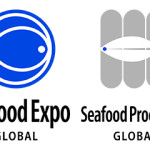A new report released by the Sustainable Fisheries Partnership on 12 December indicates that the world’s farmed shrimp production has lingering sustainability concerns with little improvement likely on the horizon.
The new report, which is a part of SFP’s “Target 75” initiative, classifies just 8.8 percent of the global production of farmed shrimp as “improving,” and none is classified as sustainable under the Target 75 standards. The major shrimp production regions that were assessed – China, Ecuador, India, Indonesia, Thailand, Vietnam – all have high chances of supply chain disruption and have significant sustainability concerns, according to SFP.
“The report highlights the need to work collaboratively across the supply chain to launch aquaculture improvement projects at the zonal scale and improve aquaculture governance,” Casey Marion of Beaver Street Fisheries said.
The biggest target for sustainability improvements, according to the report, are export-heavy markets that engage with countries more actively concerned about sustainability.
“This includes Ecuador, India, Indonesia, Thailand, and Vietnam. Together, these production regions account for 2.1 million metric tons, representing almost 42 percent of global production,” the report states.
Even with improvements to those markets, improvements in China will be necessary to achieve the Target 75 goal, according to the SFP. The country produces 2.2 million metric tons of large farmed shrimp, accounting for 45 percent of the sector on its own. The majority of that shrimp stays within the country’s borders, which means outside market pressure won’t be able to influence the industry.
A key issue within the sector overall, according to the report, is a lack of transparency and data availability along the entire supply chain.
“Most critical is that suppliers should be able to identify sources of shrimp to the province/state of origin, in order to better understand the risks in any given supply chain,” the report states.
To that end, report calls for the countries with high shrimp production – particularly China – to publish state-level licensing and relevant environmental impact assessment outcomes, water quality information, and more. It also calls for improved licensing and permitting processes that require environmental impact assessments for new producers, including small-scale producers.
Despite the relatively poor numbers, there are signs of improvement. While just 8.8 percent of farmed shrimp is classified as improving, that’s an increase of nearly 62 percent from 2016, when just 5.5 percent was classified as improving.
“This increase is due to an increase in the number of certified farms, as well as better-quality data being provided to SFP by [the Aquaculture Stewardship Council] and GlobalG.A.P.,” the report states.
In addition, several efforts are ongoing to improve the shrimp trade, including the Seafood Task Force, the Asian Seafood Improvement Collaborative, and efforts from by Sustainable Fisheries Partnership itself.
“At first glance, the numbers appear bleak and highlight the scope of the challenge,” SFP CEO Jim Cannon said. “We’ve launched an Aquaculture Supply Chain Roundtable to create a simple platform to engage industry, and as a first step retailers and importers should begin asking one question of their supply chain: Which province does my shrimp come from?”
Photo courtesy of Sustainable Fisheries Partnership






